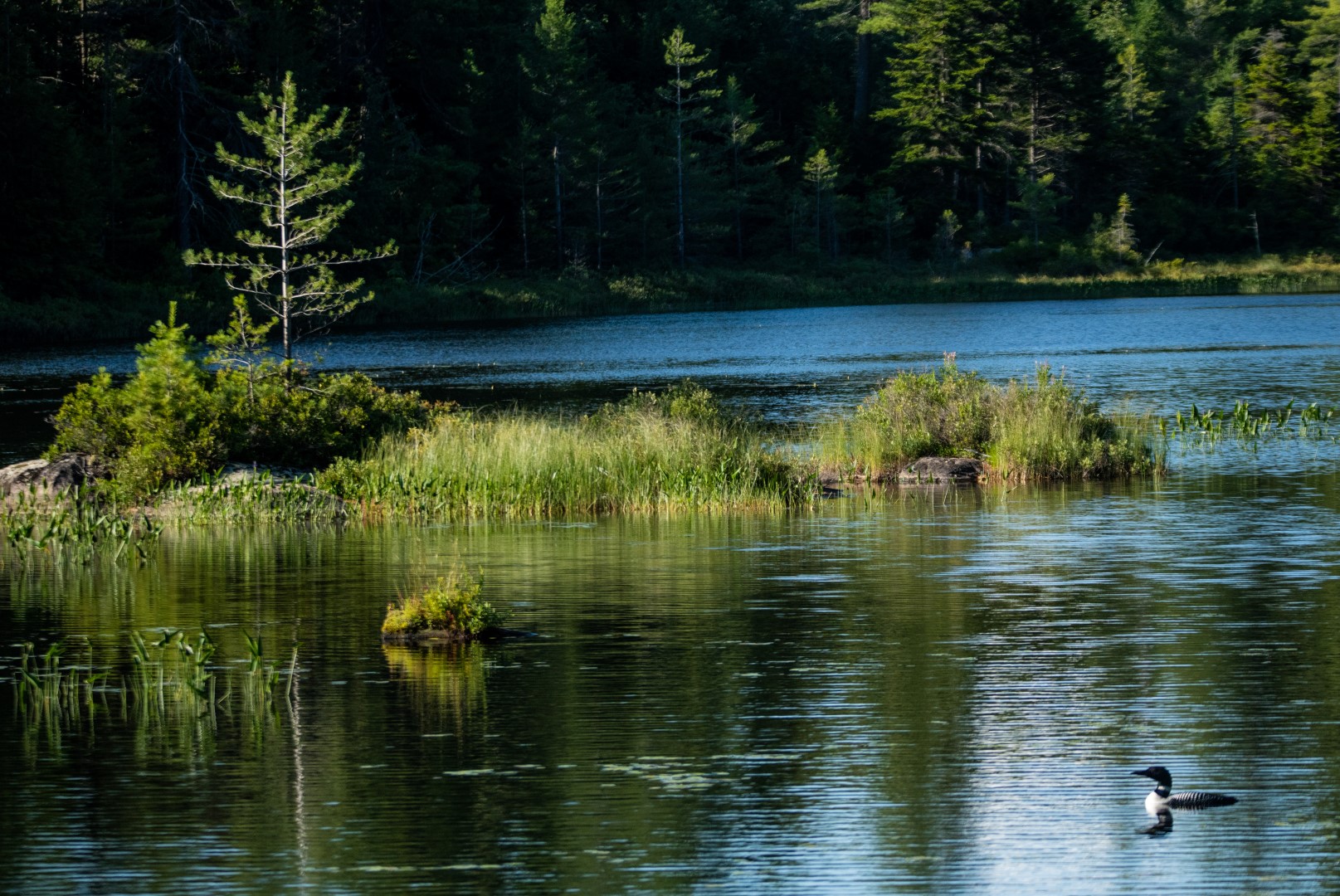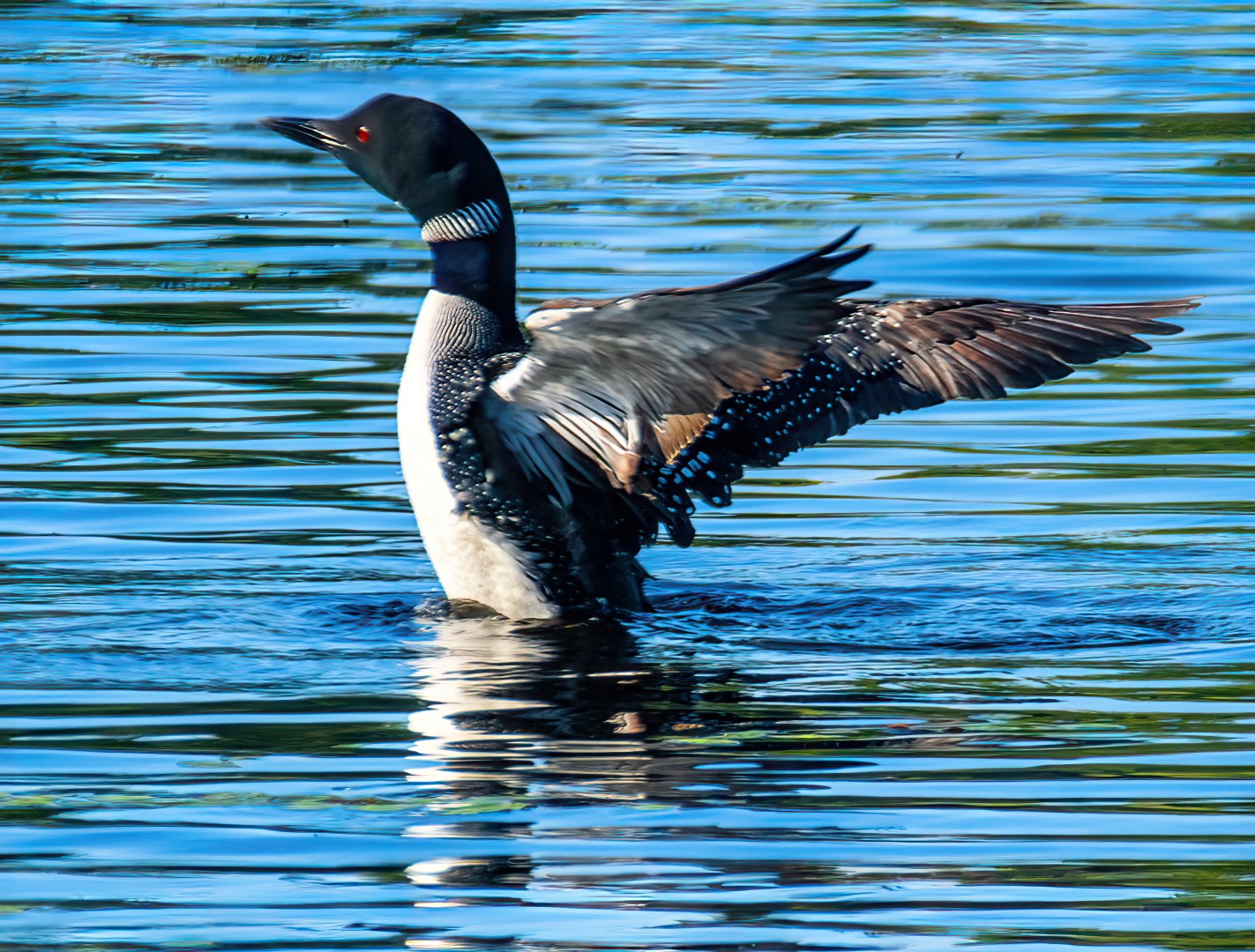
Adirondack Chronicles 2022.4: Lure of the Loons
The call of the loon is one of the most beautiful, haunting melodies of nature. I could sit by the lake and watch the loons all day. These elegant, mysterious ducks are symbols of the northern wilderness lakes, exemplars of the need for constant attention to environmental conservation to preserve clean water and habitats for the wild things. The loon on the video above (photo below) was quietly paddling around Bear Pond deep in the forest along a dirt road; the photographer was in a car on a small bridge over the outlet, and the loon’s mate was on the pond on the other side of the bridge. All were silent, peaceful and calm. But when the photographer started the car to move on, the loon started to call out to its mate, a warning that the human machines were on the loose. The human moved on; the loons returned to their silent paddling.
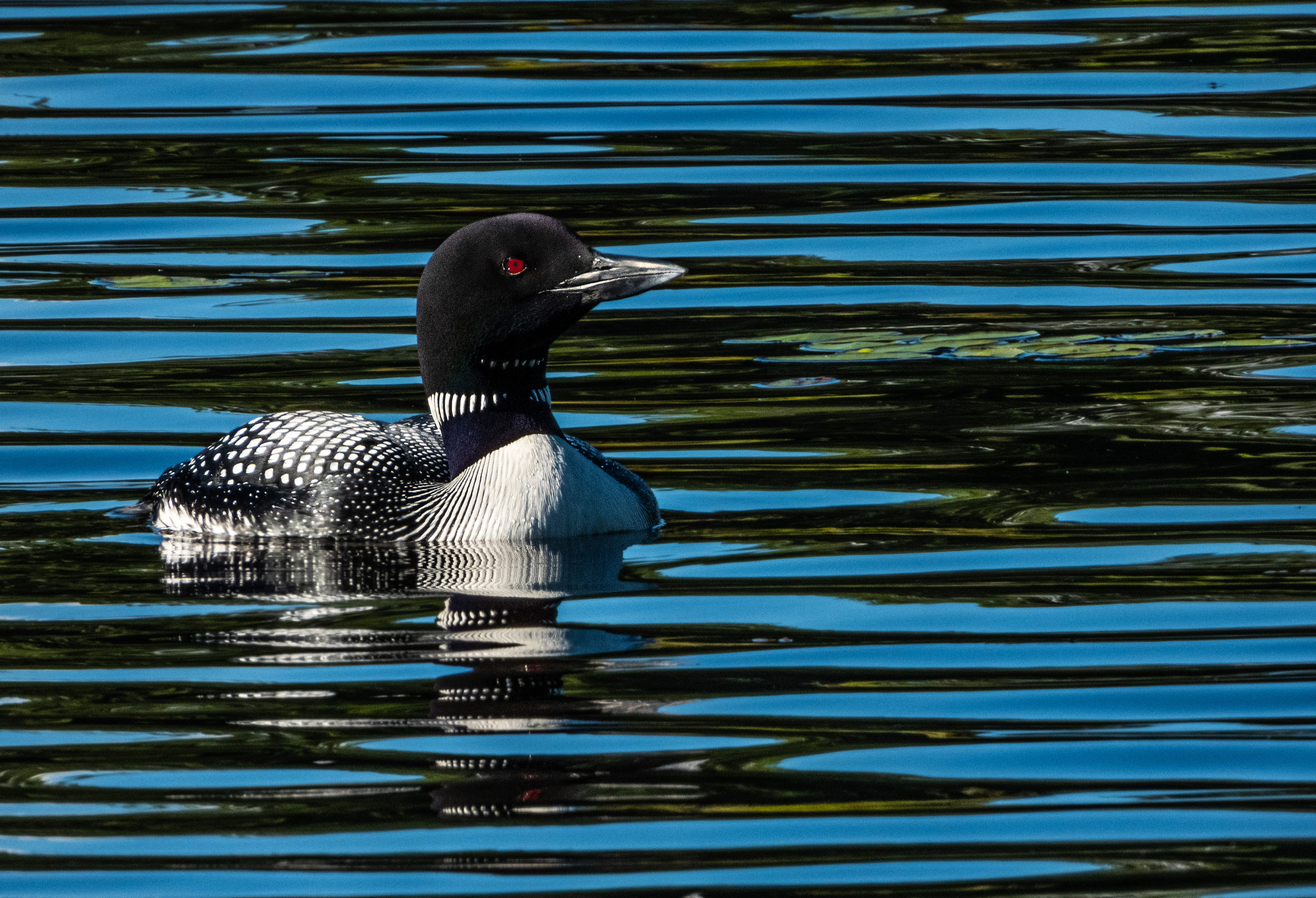
Breeding season is over, so the loons I see now out on the lakes are quietly paddling around, often alone perhaps with mates and chicks nearby. Loons are always alert to their surroundings, heads turning back and forth with those magnificent red eyes catching the sun. Sometimes they rise up from the water to spread their wings:

It’s always interesting to watch loon parents care for their young, including those impressive rides for the kids on the backs of loon parents:
For about 12 weeks the parent loons take care of the chick, feeding endlessly and teaching the young ones how to become strong and resilient in the wild…
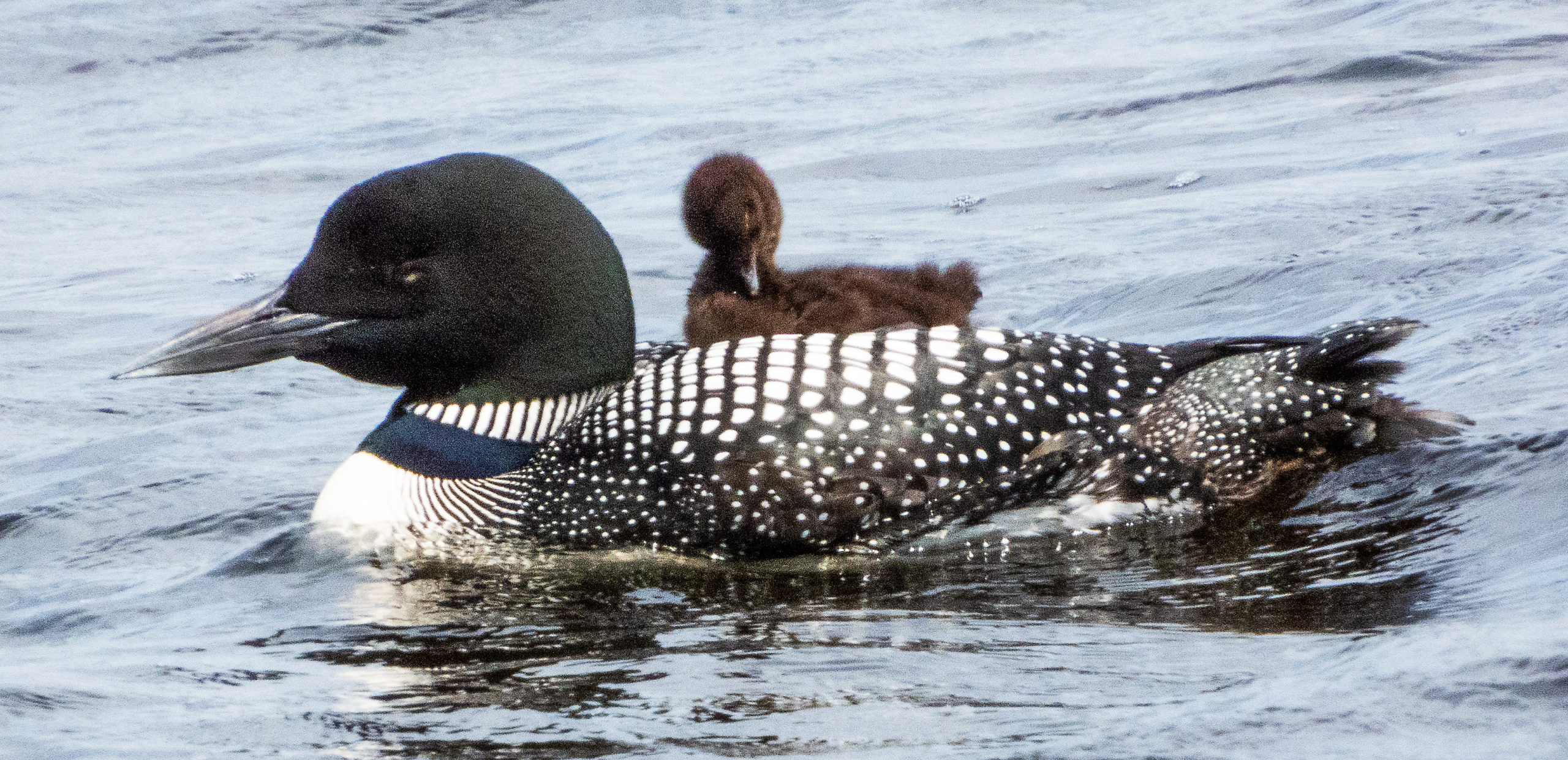
As autumn nears, the parent loons then fly off to the Atlantic coast where they spend the winter while the new young loons remain until they, too, are strong enough to fly to the coast, returning in late spring for another summer on the northern lakes.
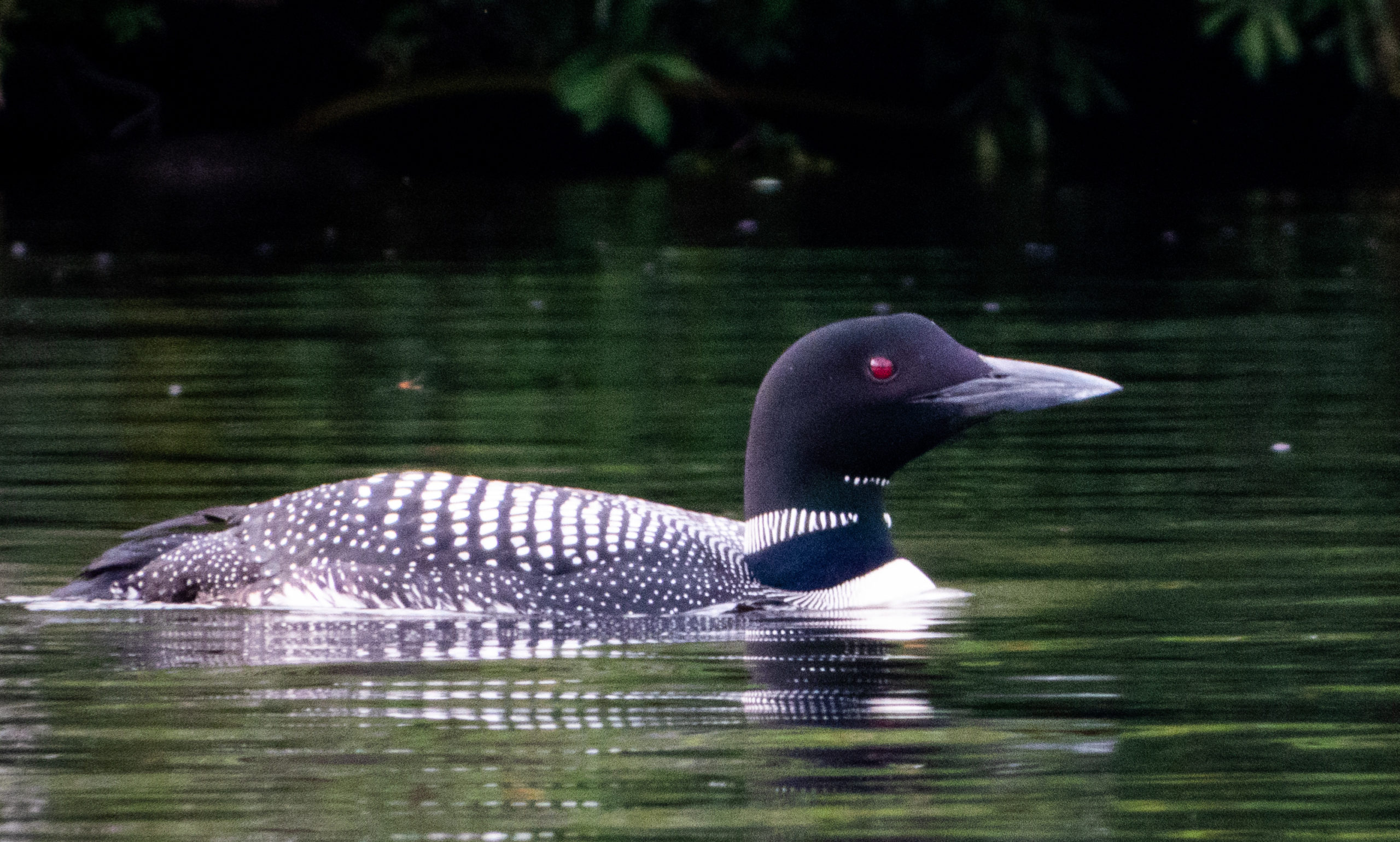
Why is any of this important? Beyond the sheer aesthetic value, which we humans should take time to appreciate, the condition of the loons is a harbinger of the condition of the environment. Acid rain, climate change, water pollution, over-development of waterfront properties, ingestion of lead leaders from fishing, fishing nets and so much more can poison and kill not only loons but other waterfowl and the predators that feed on them as well — eagles, hawks, bears and others. Deterioration and destruction of wilderness waters and forests makes the environment sick for human life as well. Future human generations depend heavily on today’s healthy and vibrant wild things and the forests, rivers, lakes and clean air they need to thrive.
